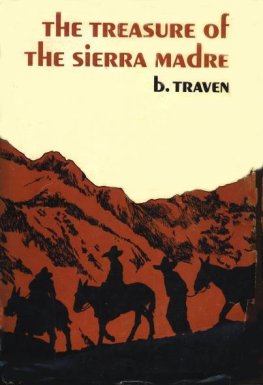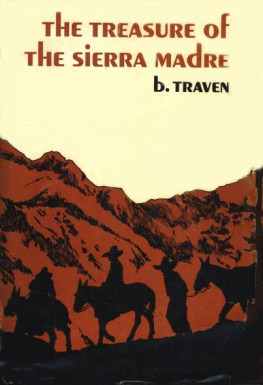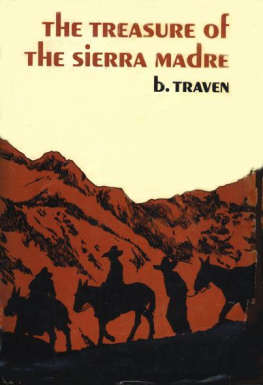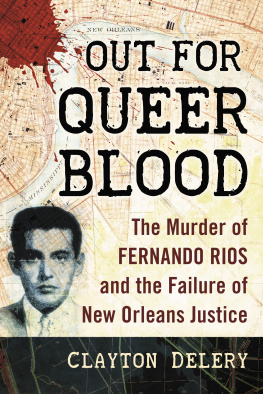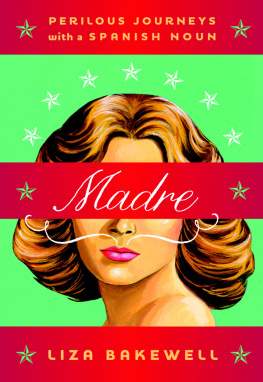Searching for Madre Matiana
Dilogos Series
KRIS LANE, SERIES EDITOR
Understanding Latin America demands dialogue, deep exploration, and frank discussion of key topics. Founded by Lyman L. Johnson in 1992 and edited since 2013 by Kris Lane, the Dilogos Series focuses on innovative scholarship in Latin American history and related fields. The series, the most successful of its type, includes specialist works accessible to a wide readership and a variety of thematic titles, all ideally suited for classroom adoption by university and college teachers.
Also available in the Dilogos Series:
Women Drug Traffickers: Mules, Bosses, and Organized Crime by Elaine Carey
Africans into Creoles: Slavery, Ethnicity, and Identity in Colonial Costa Rica by Russell Lohse
Emotions and Daily Life in Colonial Mexico edited by Javier Villa-Flores and Sonya Lipsett-Rivera
Native Brazil: Beyond the Convert and the Cannibal, 15001900 edited by Hal Langfur
The Course of Andean History by Peter V. N. Henderson
Masculinity and Sexuality in Modern Mexico edited by Anne Rubenstein and Vctor M. Macas-Gonzlez
Modernizing Minds in El Salvador: Education Reform and the Cold War, 19601980 by Hctor Lindo-Fuentes and Erik Ching
A History of Mining in Latin America: From the Colonial Era to the Present by Kendall Brown
Slavery, Freedom, and Abolition in Latin America and the Atlantic World by Christopher Schmidt-Nowara
Cuauhtmocs Bones: Forging National Identity in Modern Mexico by Paul Gillingham
For additional titles in the Dilogos Series, please visit unmpress.com .
Searching for Madre Matiana
Prophecy and Popular Culture in Modern Mexico
EDWARD WRIGHT-RIOS
2014 by the University of New Mexico Press
All rights reserved. Published 2014
Printed in the United States of America
19 18 17 16 15 14 1 2 3 4 5 6
The Library of Congress has cataloged the printed edition as follows:
Wright-Rios, Edward N. (Edward Newport), 1965
Searching for Madre Matiana : prophecy and popular culture in modern Mexico / Edward Wright-Rios. First [edition].
pages cm. (Dilogos series)
Includes bibliographical references and index.
ISBN 978-0-8263-4659-9 (pbk. : alk. paper) ISBN 978-0-8263-4660-5 (electronic)
1. Matiana, MadreProphecies. 2. Catholic ChurchMexicoHistory. 3. MexicoChurch history19th century. 4. MexicoHistoryProphecies. 5. Women in the Catholic ChurchMexicoHistory. I. Title.
BX1428.3.W75 2014
282'.72dc23
2014007898
Cover photograph: Tineras Splicas... , 1911, by Jos Guadalupe Posada. Jean Charlot Collection, University of Hawaii at Manoa Library. Gift of Zohmah Charlot, 1981. (JCC:JGP:V10)
Cover design by Lisa Tremaine
For my colleague, first reader, and father-in-law, Enrique Pupo-Walker
Acknowledgments
It is always a daunting task to address the balance sheet that emerges in the process of research and writing. In my case, it starts at home. My wife, Gini Pupo-Walker, and my nearly grown children, Elas and Sara, indulge my interest in old buildings, moldy books, faded photographs, and dead people. On a different level, Enrique Pupo-Walker read drafts of each chapter, critiqued them carefully, and debated them with me at numerous breakfast meetings. My sister and colleague, Elizabeth Wright, also read and commented on chunks of the project at various junctures. (She also tracked down and secured a copy of a key source in Spain.) In Mexico I have been lucky to count on the hospitality and good company of uncles, aunts, cousins, nieces, and nephews: the Luthe Ros and Prez Castro clans of Guadalajara and Mexico City respectively.
As is typical, parts of this book benefited greatly from the support, encouragement, and feedback I received from colleagues in various circumstances. A trio of assistants at Vanderbilt, Francisco Flores-Cuautle, Ty West, and Lance Ingwersen, joined me in organizing and understanding my variegated sources. Likewise, Asela Resndiz Muoz and Beatriz Montes Rojas aided my research in Mexico. Workshops, colloquia, and discussions at conferences proved crucial. A number of graduate students at Vanderbilt read excerpts of this project at different junctures, and their insights have helped me along the way. I must also acknowledge from Vanderbilt the many friends and colleagues involved in the Mexican Studies Group, the Robert Penn Warren Center for the Humanities, and the Center for Latin American Studies. They provide the support, space, and opportunities for scholarly exchange.
I gave an early presentation at the University of Georgias Spanish department, which helped me craft the broad outlines of this study. I also must thank Flor Salazar and Sergio Caedo Gamboa for including me in a colloquium in San Luis Potos where the project evolved still further. Later on Yanna Yannakakis, Jeffrey Lesser, and their graduate students at Emory University gave part of the project the rigorous workshop treatment. Chris Ehricks insights on gender, satire, and impersonation also proved helpful as well. My analysis in chapter 6 on satirical journalism benefited greatly from their comments and the revision process that preceded its publication in The Americas 68, no. 2 (2011). Eric Zolov and the readers gave suggestions that were exceptionally helpful. Bill French and Bill Beezley also offered encouragement and their perspectives on facets of the Matiana tradition. In a similar vein, the entire twentieth-century portion of the project benefited from the observations offered by Margaret Chowning, Matthew OHara, and others at a symposium hosted by the University of California, Berkeley. Brian Connaughton also read and commented on a draft of the manuscript. At different moments, from beginning to end, he graciously shared his considerable wisdom on sources and historiography.
In less formal settings, this project would have been much different (and certainly poorer) were it not for discussions with distinguished colleagues based in Mexico: Erika Pani, John Mraz, Jean Meyer, and Laura Surez de la Torre. Robert Curley offered insights on archival collections in Guadalajara, on Lola lvarez Bravos photographs, and he gamely debated Matianas significance on several occasions. Ken Ward also shared useful insights regarding the history of printing in Mexico. I must acknowledge the feedback from Vanderbilt colleagues Paul Kramer and Joel Harrington as I put the finishing touches on the manuscript. Celso Castilho also read passages and offered useful comments at various junctures. Along these lines, I would be remiss if I did not thank other colleagues here at VanderbiltMarshall Eakin, Jane Landers, and Frank Robinsonwhose encouragement, expertise, and friendship provide a daily reminder of the importance of intellectual community.








